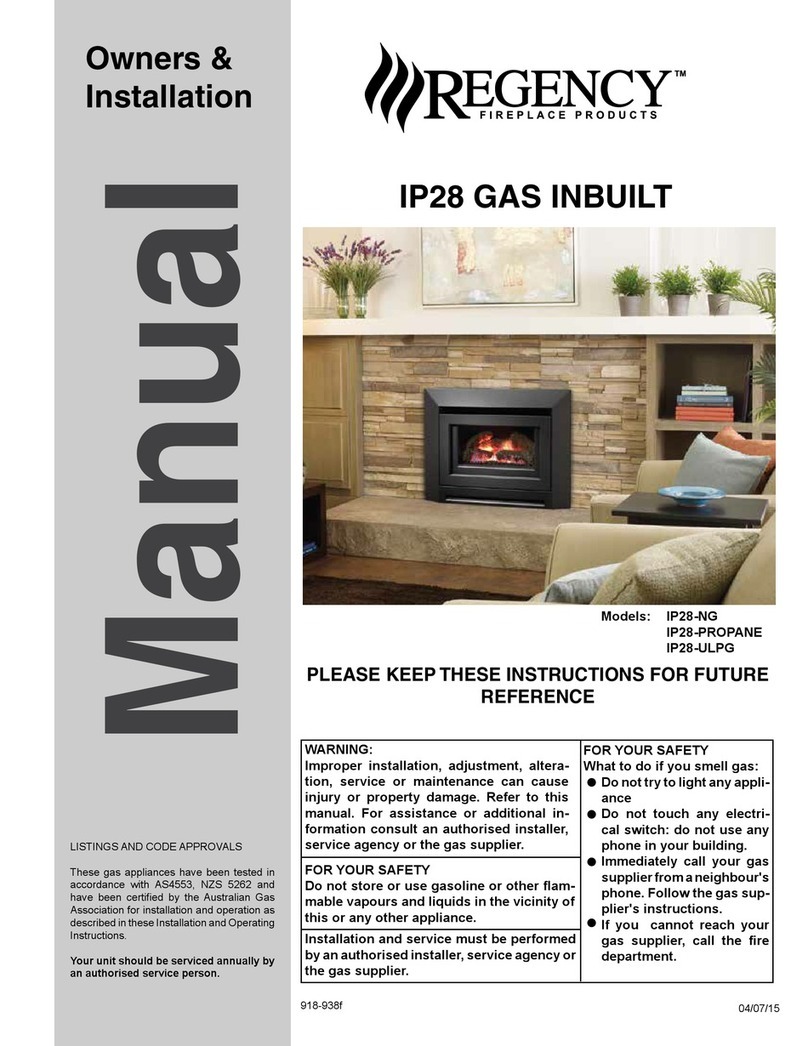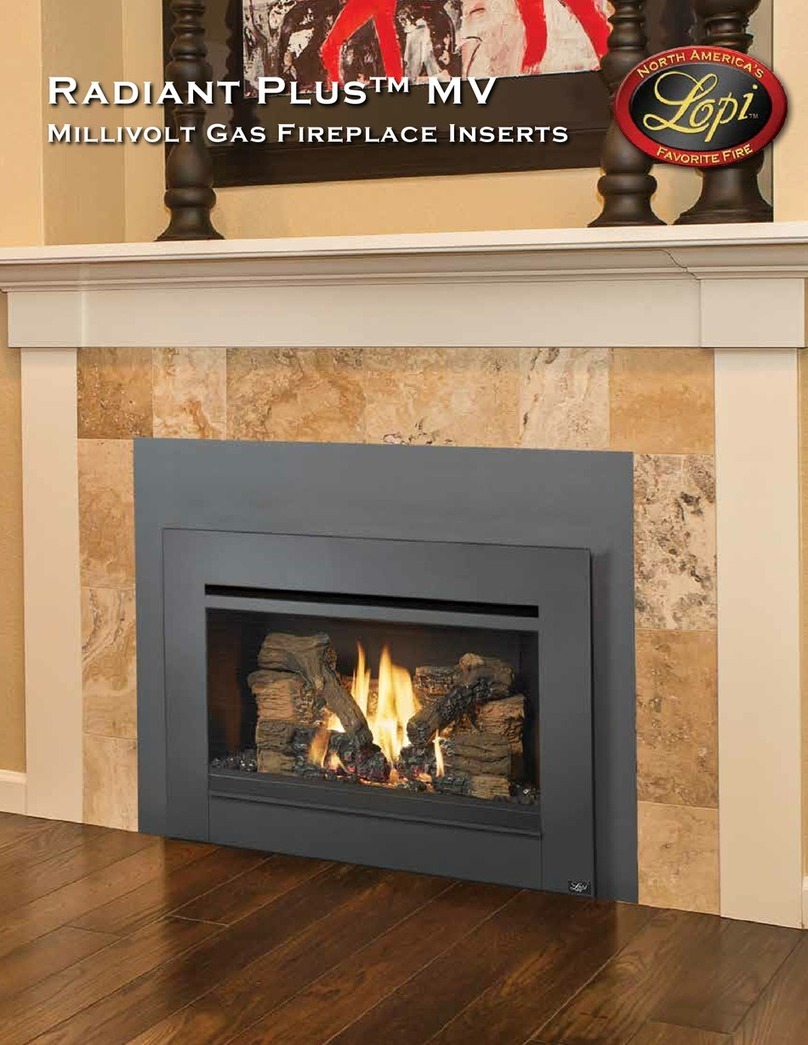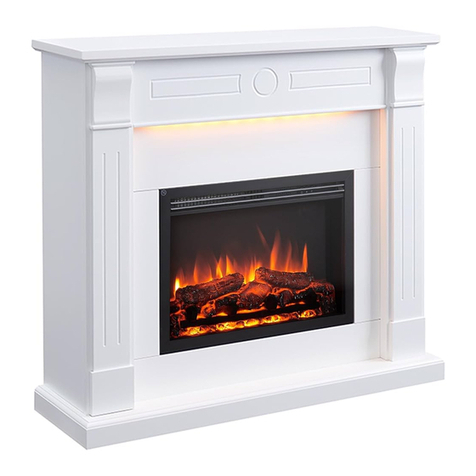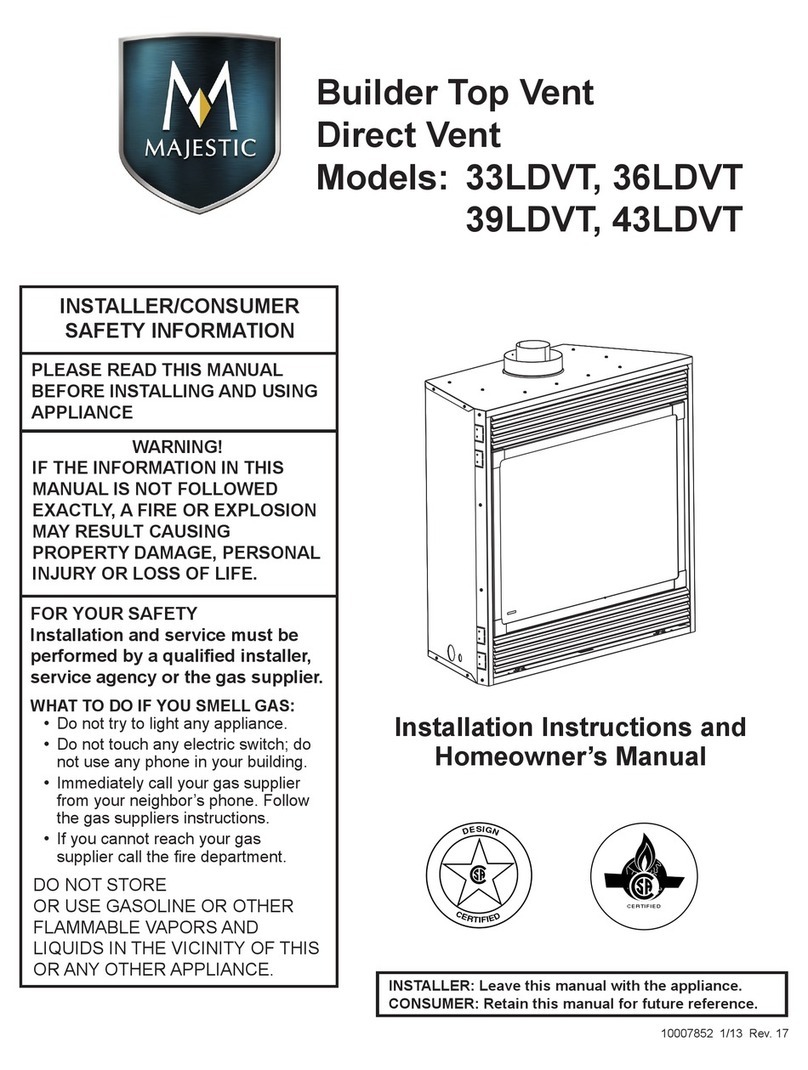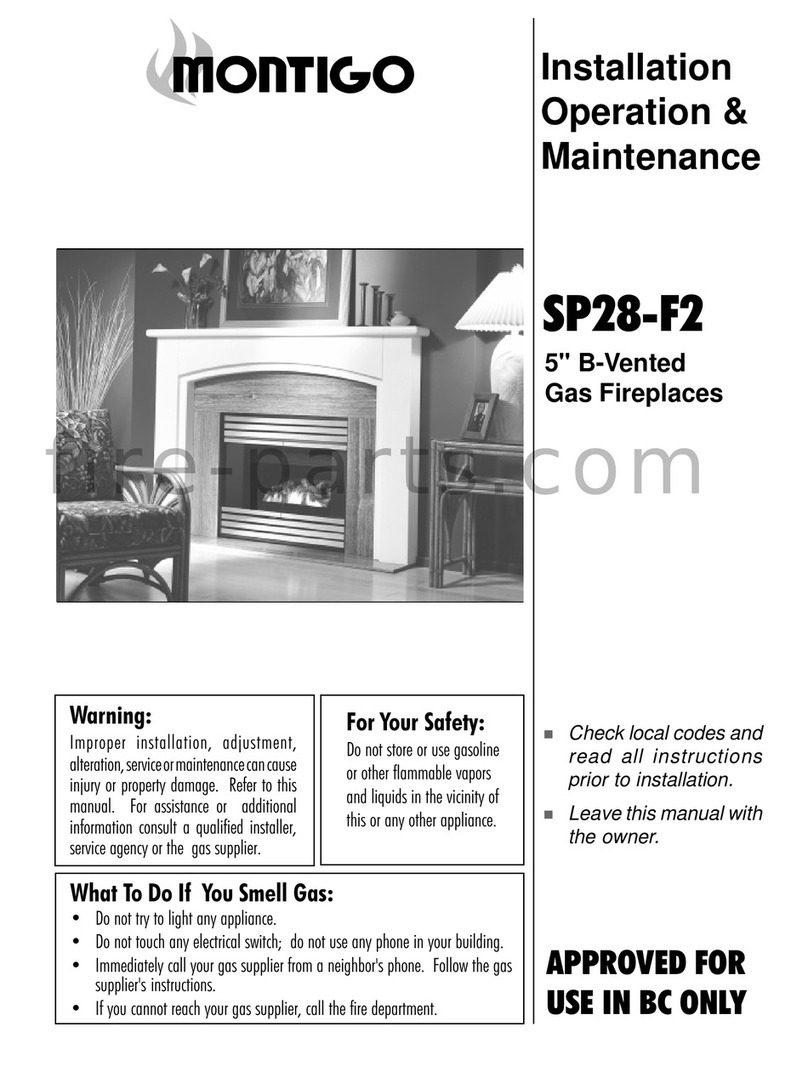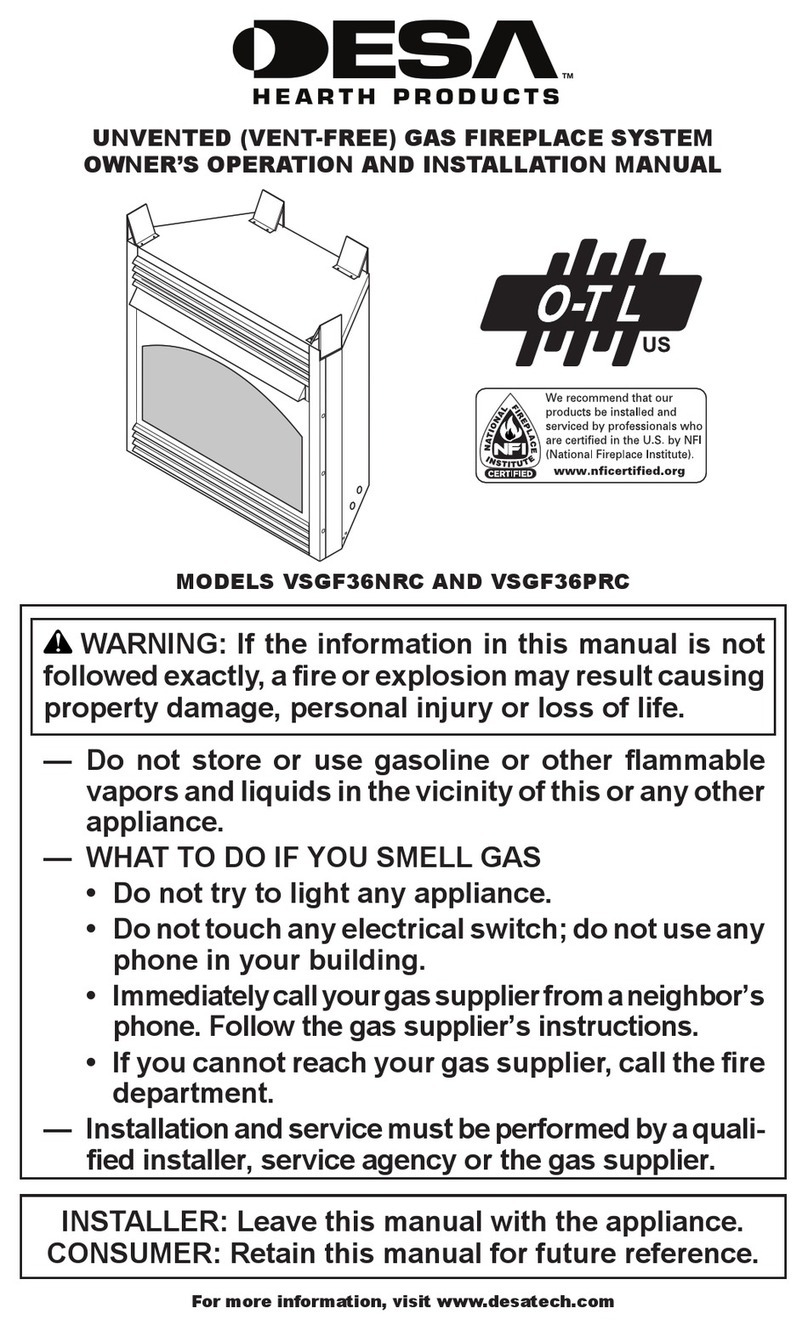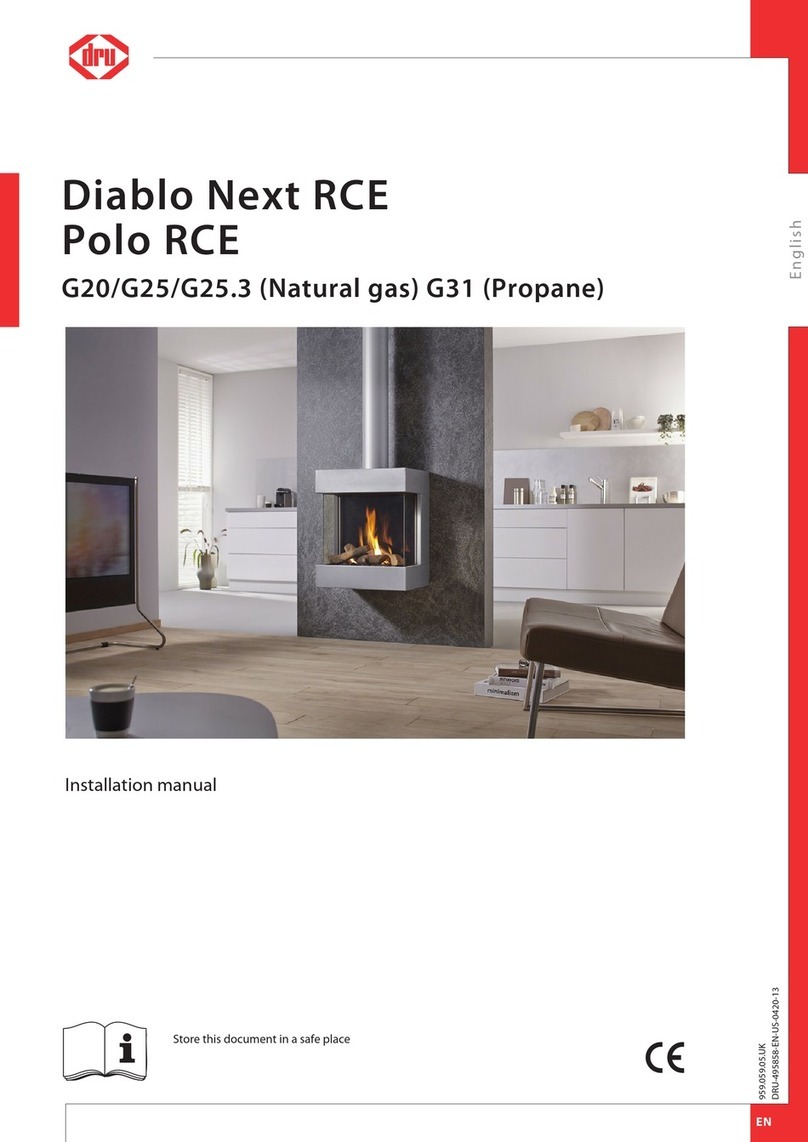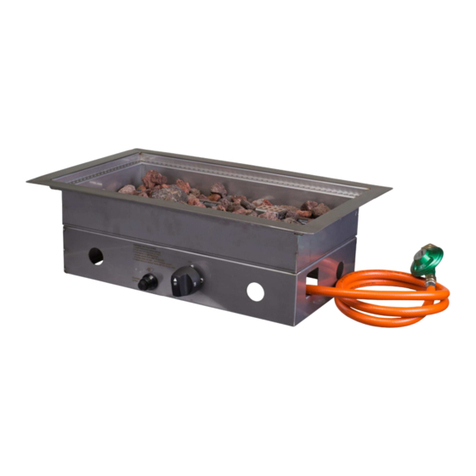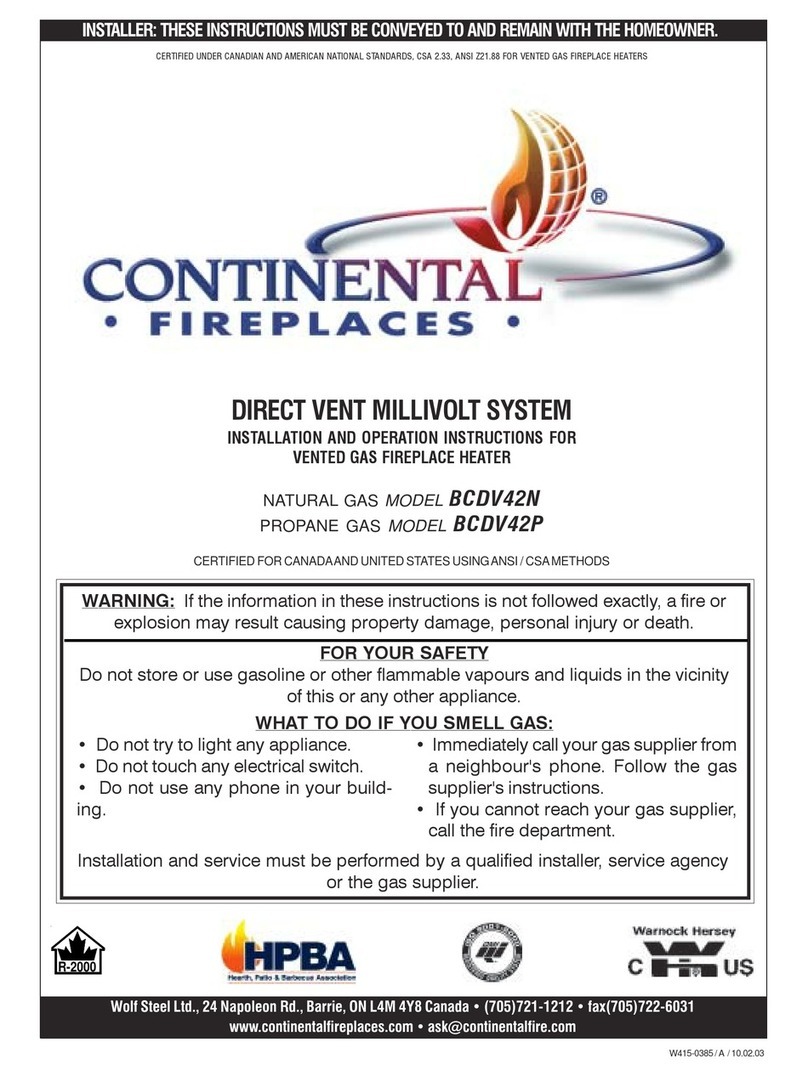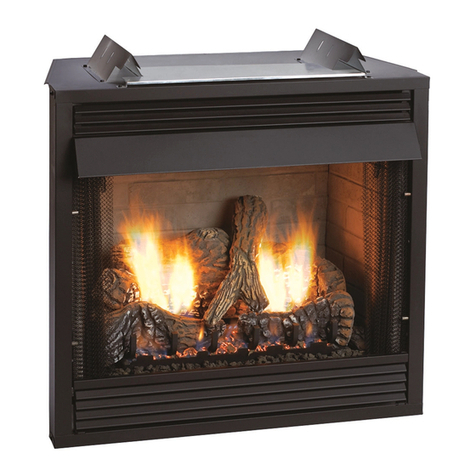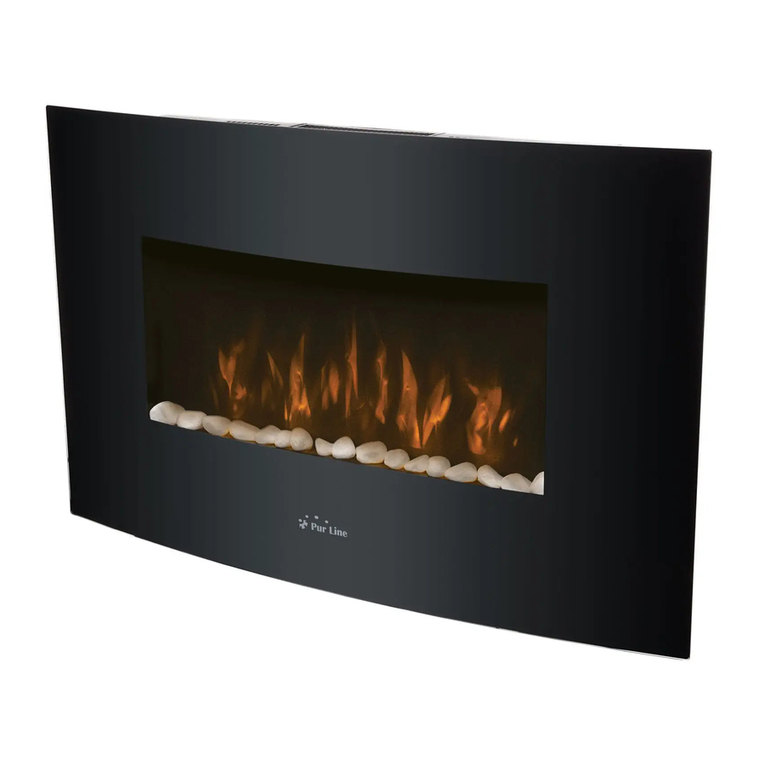6
The stove's packaging must not be impacted or
hit by other objects or equipment, under penalty
of causing damage that will compromise the
stove's future operation.
Make sure that the means of transport used has
a capacity greater than the weight of the stove.
7. INSTALLATION GUIDE
To obtain the best performance from the stove
and uniform heating of the room, you must
comply with some essential rules.
Improper installation will compromise the safety
and proper functioning of the stove.
When installing the equipment, all national and
local regulations, as well as European standards,
must be observed.
Leveling the stove
The stove must be leveled using a bubble water
level at the back, front and at an angle from apex
to apex.
Installation constraints
It must be safeguarded that no mechanical
exhaust fans or collective ventilation ducts are
installed at the installation site.
In any case, it must be safeguarded that the
installation site is not in a depression, preventing
the simultaneous operation of the systems
mentioned above, since this will compromise the
normal functioning of the stove and possible
release of dangerous fumes. Check point 15-
Models and technical characteristicsfor more
information.
Retriever installation location
When installing the stove, the minimum distances
from combustible surfaces must be ensured. In
the case of non-flammable walls/objects these
distances can be reduced by half.
The floor protection to support the stove must
guarantee fire resistance in accordance with
European standards. Never place the stove
directly on wood, carpet or other combustible
materials.
During installation, structures, coverings, beams,
etc., must be protected from combustible or
flammable material and which are exposed to
excessive heat, either from the stove or the
chimney, particularly when crossing partitions
and false ceilings. In these cases, appropriate
thermal insulation should be used, namely
vermiculite.
Check point 15 - Models and technical
characteristicsfor more information.
The manufacturer will not be responsible for
changes in the properties of the materials
surrounding the fireplace and chimney.
Air intake
The heat generated by the stove results from the
heat produced by the chemical reaction of
combustion of the pellets in the combustion
chamber.
For this combustion to occur under the best
conditions, it is necessary to safeguard the
correct amount of oxidizing agent (oxygen
present in the air).
During operation, the stove absorbs a quantity of
air from the room where it is located, which
enters the combustion chamber through an air
inlet located at the back of the stove, which can
be channeled to the outside.
You must not use bends or tubes with a section
smaller than 60mm, nor a maximum length
greater than 800mm.
You must also safeguard that this admission will
never be obstructed from the outside and that it
is at least 20 cm from the ground.
Outside, you should put protection against rain
and wind.
Safeguard the requirements and relative to
ventilation and air supply referred to in point 7.2-
Installation constraints.
In the figure below you will find several examples
that will help you to verify the stability and
correction of the flame.




















